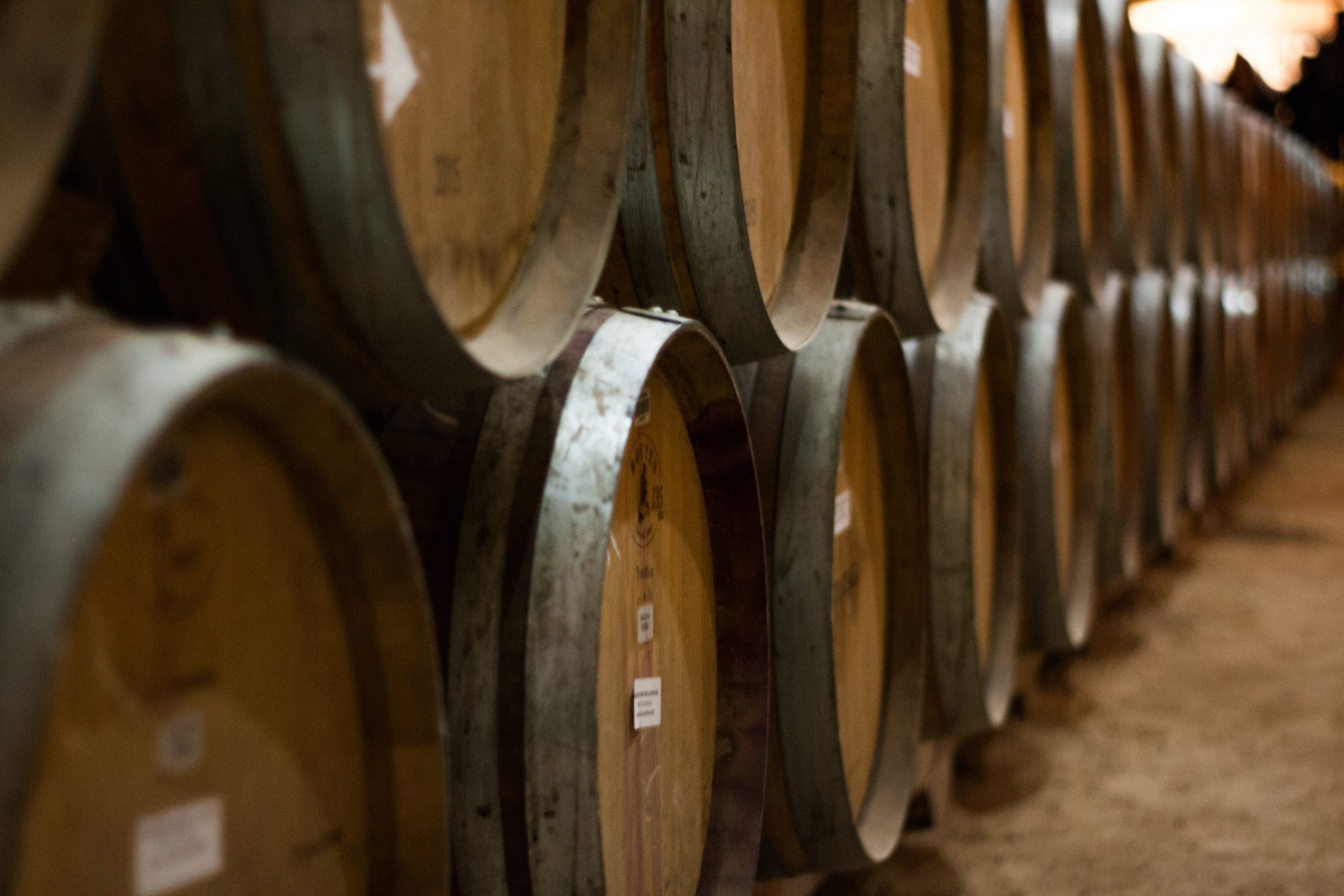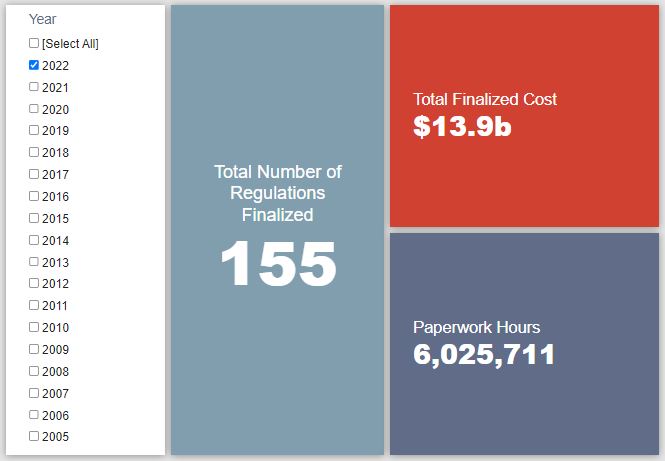Week in Regulation
August 29, 2022
Dryer Machine Efficiency Standards Lead Moderately Active Week
Coming on the heels of a relative dud the week before, this past week saw a fair amount of activity in the pages of the Federal Register. There were 15 rulemakings with some measurable economic impact. Energy efficiency standards for “Consumer Clothes Dryers” and a rule updating gas pipeline safety requirements were the most prominent actions. Across all rulemakings, agencies published $1.2 billion in total net costs and added 3.5 million annual paperwork burden hours.
REGULATORY TOPLINES
- Proposed Rules: 25
- Final Rules: 86
- 2022 Total Pages: 52,577
- 2022 Final Rule Costs: $13.9 billion
- 2022 Proposed Rule Costs: $88.2 billion
NOTABLE REGULATORY ACTIONS
The most significant rulemaking of the week was the Department of Energy (DOE) proposed rule regarding “Energy Conservation Program: Energy Conservation Standards for Consumer Clothes Dryers.” As the title suggests, this proposal seeks to implement a new set of energy efficiency standards for dryer machines. The rulemaking covers seven “product classes” of machines, primarily varying in size and heating mechanism (gas or electric). DOE estimates that the increased “Incremental Product Costs” from these standards could reach a total of $760 million over a 30-year window.
The most notable final rule of the week was a rule from the Department of Transportation (DOT) regarding “Pipeline Safety: Safety of Gas Transmission Pipelines: Repair Criteria, Integrity Management Improvements, Cathodic Protection, Management of Change, and Other Related Amendments.” According to DOT, the rule is the culmination of:
A decade-long effort … to amend its regulations governing onshore natural gas transmission pipelines in response to the tragic September 9, 2010, incident at a Pacific Gas and Electric Company (PG&E) gas transmission pipeline in San Bruno, CA, which resulted in the death of 8 people, injuries to more than 60 other people, and the destruction or damage of over 100 homes.
The rule makes a series of changes to the relevant regulatory code based upon the agency’s findings from that incident. In particular, the rule establishes more stringent requirements for pipeline operators in how they inspect their systems for such risks as corrosion and extreme weather conditions. DOT estimates that total costs to covered entities could reach roughly $176 million over a 20-year period.
TRACKING THE ADMINISTRATIONS
As we have already seen from executive orders and memos, the Biden Administration will surely provide plenty of contrasts with the Trump Administration on the regulatory front. And while there is a general expectation that the current administration will seek to broadly restore Obama-esque regulatory actions, there will also be areas where it charts its own course. Since the AAF RegRodeo data extend back to 2005, it is possible to provide weekly updates on how the top-level trends of President Biden’s regulatory record track with those of his two most recent predecessors. The following table provides the cumulative totals of final rules containing some quantified economic impact from each administration through this point in their respective terms.
![]()
The pipeline safety rule discussed above provided the bulk of modest increases in the Biden Administration’s burden totals. There was minimal change in the Trump-era figures. The most “active” administration of the three covered here was Obama’s. Late August 2010 apparently saw costs and paperwork increase by nearly $650 million and 970,000 hours, respectively. An Environmental Protection Agency rule on air quality standards for “stationary spark ignition reciprocating internal combustion engines” provided the vast majority of those increases.
THIS WEEK’S REGULATORY PICTURE
This week, the federal government approves more additives in wine.

Source: “Wine Barrels” by Vince Veras
On August 24, the Alcohol and Tobacco Tax and Trade Bureau (TTB), an agency within the Department of the Treasury, published a final rule in the Federal Register that will allow winemakers to use more additives and processes in production.
The TTB authorizes the use of “wine treating materials and processes” in the production of wine. These additives and processes can stabilize and refine wines to help producers obtain certain taste and quality preferences. TTB maintains a list of acceptable additives and has a process for allowing producers to petition for certain uses of materials not on the list.
In 2016, TTB proposed to add via regulation a list of several materials that had already been approved via petition for specific use. Issuing a rulemaking to add the materials had the benefit of allowing TTB to obtain public input (and thus more information) about the materials in question, according to the agency. Nearly six years later, TTB is making many of the proposed changes final.
TTB is justifying the changes by noting that the additions will allow more domestic winemakers to export their products abroad. Industry commenters were supportive of this approach because the newly allowed additives will create a more stable product that is better for shipping to foreign markets.
One commenter, however, opposed the proposal. That commenter alleged that only one of the new additives had been evaluated by the Food and Drug Administration (FDA) for “health and allergen potential.” The commenter also suggested that TTB require the labeling of all ingredients in wine.
TTB disputed the allegation regarding FDA evaluation by noting that all approved materials “must have documentary evidence from the FDA that the material is consistent with the food additive requirements.” TTB did seem more receptive to the labeling suggestion, however, saying that it would consider a rulemaking.
TOTAL BURDENS
Since January 1, the federal government has published $102.1 billion in total net costs (with $13.9 billion in new costs from finalized rules) and 86.6 million hours of net annual paperwork burden increases (with 6 million hours in increases from final rules).












